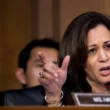US-Iran: avoiding military confrontation
US-Iran: avoiding military confrontation
As the crunch of the Trump administration’s maximum pressure campaign is being acutely felt by the regime in Iran, the Iranians have been lashing out in recent months—in the Persian Gulf and regarding their nuclear commitments according to the Joint Comprehensive Plan of Action (JCPOA).
The actions of the regime have so far been measured, because their message is mainly to European powers. The Iranians want to scare the Europeans with hints of how bad the situation can get, to further distance them from the Americans and to push them to be more active in ensuring that sanctions are either successfully circumvented or lifted. So far, it seems clear that their provocations are not intended as a message to the United States that they are preparing for war.
Nevertheless, as has been repeated by virtually every commentator on the topic, the situation can inadvertently escalate to more serious military clashes in the Gulf. Therefore, while neither side desires war, the increasing tensions cannot be taken lightly.
The first step in thinking about how to defuse the tensions is to correctly identify their source. Currently, the dominant message that features in media reports is that the tensions are the direct result of President Trump leaving the JCPOA last May. According to this narrative, Trump’s withdrawal from the deal was unwarranted because Iran has been upholding its JCPOA commitments, according to quarterly International Atomic Energy Agency (IAEA) reports. Moreover, it is noted that Iran has been very patient—it continued to uphold the deal for 14 months before it began demonstrating its (legitimate) frustration. The upshot of this narrative is that the United States is the bully in this story—unnecessarily leaving a deal that was working, and unjustly beginning a pressure campaign against an innocent and compliant partner.
But is this an accurate depiction of the situation? Hardly. The source of tension is not Trump leaving the JCPOA, but rather the dangerously flawed nuclear deal itself and Iran’s ongoing nuclear weapons ambitions. It was the failure of Trump’s attempts over the course of February-April 2018 to improve the deal together with the Europeans that led to his decision to withdraw. Iran remains in the deal not because it is so compliant, but rather because the deal isquite good for Iran, considering that it was caught red handed working on a military nuclear program for decades, in violation of the Nuclear Non-Proliferation Treaty (NPT), while lying to and deceiving the IAEA about its activities. The deal enabled Iran to keep its breakout capability for creating a nuclear weapon; granted legitimacy to Iran’s uranium enrichment program, including explicit permission to work on a full range of advanced centrifuges; did not address Iran’s missile program (a delivery mechanism for nuclear weapons); and secured an unconditional expiration date for the deal. Why would Iran want to leave?
Moreover, tensions with Iran originate in the aggressive, noncooperative, bad-faith behavior of Iran. Contrary to the expectations of the Obama administration, Iran did not become a more cooperative player after achieving the JCPOA. Quite the opposite. It became more aggressive throughout the Middle East, most notably in Syria where it commenced a joint military campaign with Russia in September 2015, leading to the murder of tens of thousands of Syrians. It has entrenched itself in Syria, posing a concrete threat to Israel, and has stepped up efforts to pass advanced weaponry to Hezbollah, including precision-guided technology for the organization’s rockets and missiles—a dire threat to Israel.
Iran has also not been the innocent, nuclear-compliant player that the narrative suggests. Rather there is ample evidence of ongoing attempts on the part of the regime to ensure its nuclear weapons option remains alive. Iran lied about the piping at its Arak heavy water nuclear reactor, which could be used to produce plutonium, by not notifying the other signatories to the JCPOA that it had purchased new piping that could be used to replace piping filled with cement under the JCPOA; according to German intelligence, Iran has continued efforts to procure materials/equipment that can be used in a nuclear weapons program. Traces of radioactive material were found in soil samples taken from the nuclear warehouse in Tehran that was identified in the nuclear archive, and of major concern is the archive itself, which contains a vast amount of information unknown to the IAEA in 2015, with relevance to Iran’s intent to create five nuclear bombs. Aside from the fact that this material needs to be checked out thoroughly by the IAEA, the very fact that Iran meticulously saved all of its weaponization plans exposes that it wants to maintain this option.
So how can tensions be defused? Not by conceding to Iran’s demands, under the illusion that the Trump administration is the aggressor. What is sorely needed is unity in the face of Iran’s problematic behavior. Unfortunately, despite some initial rhetoric from the Europeans indicating that they would not accept Iran’s JCPOA breaches and that there would be “consequences,” their reaction to the actual breaches has been very mild.
The fastest route to defusing tensions would be for Iran to come back to the table in order to negotiate a much improved nuclear deal. If Iran were genuinely not interested in maintaining the option to produce nuclear weapons, this would not be a hard call for the regime.
Emily B. Landau
Institute for National Security Studies
Tel Aviv University
senior research fellow and head of the Arms Control and Regional Security Program













